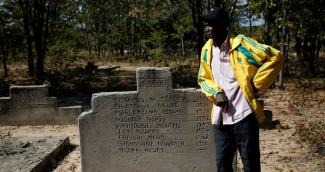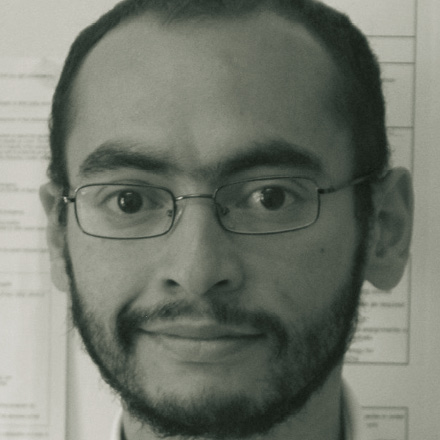Genocidal violence
Gukurahundi: ZANU’s genocidal campaign against ZAPU
 picture alliance / REUTERS / PHILIMON BULAWAYO
picture alliance / REUTERS / PHILIMON BULAWAYO
The country’s independence was won by the combined efforts of two liberation movements. One was the Zimbabwe African People’s Union (ZAPU), the other was the Zimbabwe African National Union (ZANU), which is now the ruling political party.
Both ZAPU and ZANU had military wings. They fought on different fronts, but their shared goal was to free the people from white minority rule.
The sense of unity did not last. ZANU won the first post-independence elections and soon started a disinformation campaign against the erstwhile partner during the struggle. Prime Minister Robert Mugabe, who served as president from 1987 to 2017, accused ZAPU leader Joshua Nkomo of destabilising the country. Mugabe claimed Nkomo, bitter after losing the elections, was mobilising dissidents. ZANU demonised ZAPU and accused its leaders of wanting to “topple a democratically elected government.” Mugabe publicly declared that the “dissident party and its dissident father” deserved total destruction.
Gukurahundi atrocities
ZAPU had been strong in Matabeleland, the southern part of the country, where the predominant language is Ndebele. The region’s people, whether ZAPU supporters or not, were hoping to celebrate independence in 1980. Instead, they soon suffered a great betrayal. ZANU leaders now claimed to be the young nation’s only true patriots, though they basically represented the Shona speakers they had organised in the independence struggle. A brutal genocide followed. It is called Gukurahundi.
Politically uninvolved citizens were killed. Women and children were slaughtered, accused of being the wives and children of dissidents. Pregnant women were brutally murdered “for carrying children of dissidents”. Ndebele speaking men too were killed for either being dissidents or supporting dissidents. More than 20,000 people, mostly Ndebele speakers, died due to the ZANU government’s efforts to exterminate ZAPU and Nkomo.
In Matabeleland, black majority rule thus turned out to be the tyranny of an electoral majority. ZAPU supporters had expected “independence” and “freedom” to apply to all Zimbabweans universally. That was what they had fought for. What they got instead was genocidal bloodshed.
Deadly disinformation
The violence was facilitated by the disinformation campaign that smeared Nkomo and his party. The campaign created fear and suspicions, deeply dividing Zimbabwe’s two most important ethnic groups.
ZANU is actually still using identity politics to rally its base. Stoking tensions helps it to stay in power, distracting from poverty and corruption, which are undermining the common good. To this day, mistrust shapes the relations of Shona speaking people with their Ndebele speaking compatriots.
It fits the pattern that the government systematically neglected Matabeleland after the genocidal campaign. It hardly invested in the regional infrastructure and other dimensions of development. Spending on schools, hospitals, electric-power provision, housing et cetera lagged behind what happened in predominantly Shona-speaking areas.
Matabeleland also has rather few media outlets. Political discourse is thus largely shaped by the media houses based in Harare, the capital, not Bulawayo, the major urban centre of Matabeleland.
Media literacy makes a difference
The rise of the internet, however, gives marginalised people opportunities to take charge of their information needs in a more independent manner. It is against this background, that the non-governmental Centre for Innovation & Technology (CITE) has launched the project “Media and Information Literacy in Matabeleland” in 2021 (see box).
In the course of four years, it aims to empower people to detect misinformation, which is unwittingly inaccurate and false, and disinformation, which is not only fake, but spread with the intention of misleading people. It is also designed to empower local communities to use digital technology for sharing their world view with others. More generally speaking, the internet is a space where Zimbabweans can resist authoritarian disinformation.
The CITE project can thus prove transformative in a double sense. It helps local people collect reliable information but also empowers them to counter disinformation with more accurate messaging.
Zenzele Ndebele heads the independent Centre for Innovation & Technology (CITE) in Bulawayo, Zimbabwe. This contribution is based on a presentation of his and his team’s at the 2022 annual FOME conference in Hamburg. It was hosted by the Interlink Academy on behalf of German organisations that support independent media in developing countries. FOME stands for “Forum Medien und Entwickung“ (Forum Media and Development).
https://twitter.com/zenzele
https://cite.org.zw/
Bhekizulu Tshuma is a journalist and media scholar at the Bulawayo-based National University of Science and Technology.

